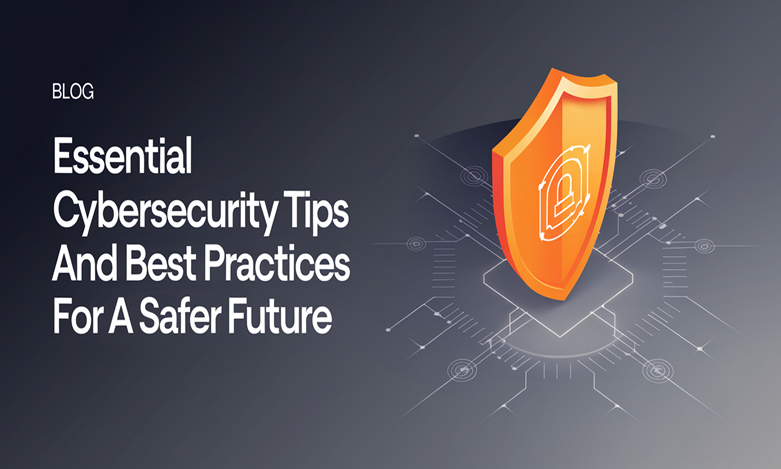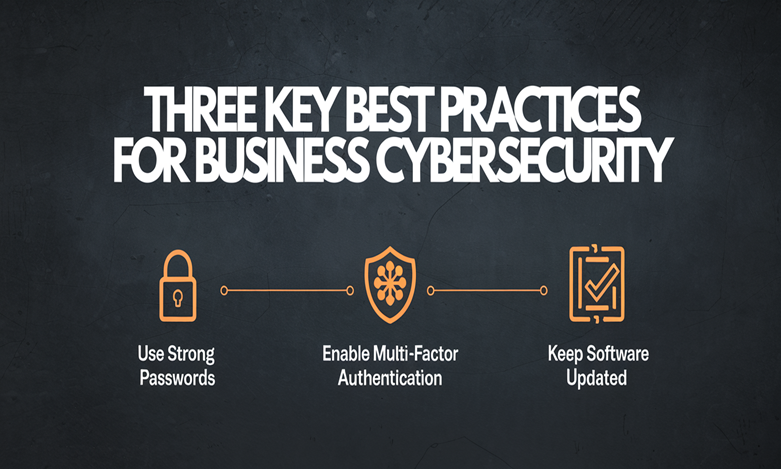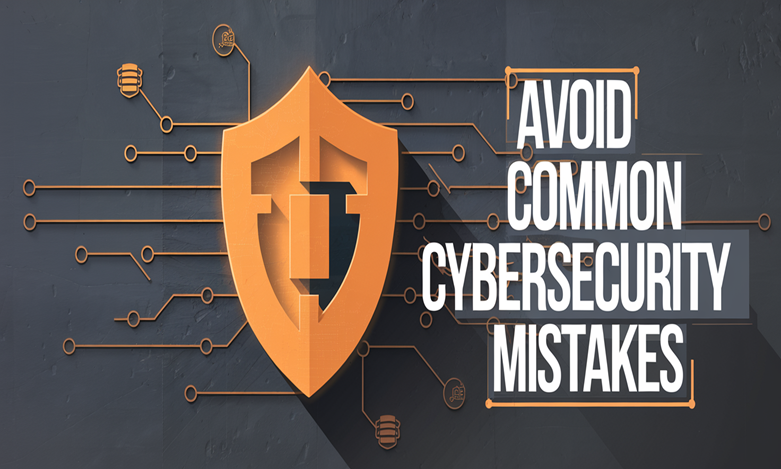Essential Cybersecurity Tips and Best Practices for a Safer Future

Introduction
It has perhaps never been more important to protect one’s computer networks against intrusions and data breaches as the risks of identity theft, data compromise, and hackers gaining unauthorized access to one’s identity, people and businesses have to be more careful.
Here are a bunch of tips that will help you protect your personal and business information on the World Wide Web. As a layman or a computer hacker, these tips are basic and practical and are intended to protect against cyber criminals.
Essential Cybersecurity Tips and Best Practices for a Safer Future
Security in cyberspace is important to warrant that people and businesses do not lose their information to hackers. Using cybersecurity tips and measures makes your defenses stronger and guarantees the safety of the information you deal with. Adopting the above tips will go a long in ensuring that you do not form part of the statistics of people who fall prey to cyber criminals.
Understanding Cybersecurity: Why It Matters
Cybersecurity also refers to the protection of an entity’s devices, networks, and data from theft, external or internal intrusion and malware attacks. The digital age and the age of computers make it possible for a cyber attack to be aimed at almost anyone, be it an individual, a business, or a company.
The result of such attacks may be financial loss, theft of an individual’s identity, or damage to reputation. As more people and businesses’ activities are shifted online, protecting your digital property is not a luxury but a need.
25 Essential Cybersecurity Tips for Everyone
Now that you are aware of the risks, let me share 25 basic tips that will help protect you online. The following are general tips based on various personal and business security measures to put you in a provocative position to fight off any possibility.
Strengthen Your Password Security
• Use unique and complex passwords: Do not choose such passwords as 123456, password criteria, abc123, letmein, admin, master, sun moon, 987654321, 111111, love, princess, etc. Rather, maka e long and complicated passwords for each account. Enable multi-factor authentication (MFA): MFA makes it even harder to break into an account even if one has the password since the two do not arrive in the same place together.
• Update passwords regularly: It may help to prevent you from getting breached if you change passwords often.
Secure Your Internet Connection
• Use VPNs when accessing public WiFi: Whenever you use public WiFi, ensure you use a VPN as it encrypts your data, meaning your privacy is protected.
• Avoid unsecured networks: Using wireless connections in an open area usually does not guarantee that the network is secure. Wherever possible, the network being employed should be safe and reliable.
• Set up secure home and office networks: Your home or office WiFi must have a strong and secure password with the encryption method of WPA3.
Stay Alert to Suspicious Activity
• Monitor accounts regularly: Look at your accounts in the bank and social media accounts profile for anything that seems out of the ordinary.
• Report suspicious emails or messages immediately: Any email that you consider to be unusually unusual or which you are not sure of should be lodged with the Service Provider.
Regularly Update Your Devices
• Install software updates: Here’s how to keep your OS and software up to date: Ensuring that you’re shielded from the newest security threats is dependent on having the most current version of your software.
• Enable automatic updates: Have your computers and/or phones, tablets,etc set to auto-update so that way they won’t miss any important updates/patches.
Best Practices for Your Business to Stay Secure
This is why enterprises or small companies are essentially on the list of cybercriminals’ preferences. It is therefore important to put in place good measures of security to secure the company’s data and that of the customers.

Implement Strong Access Controls
• Limit access to sensitive data: Only provide access to sensitive information to employees who are required to access it. Administrative control related to access management should be adopted and managed under the role-based management system.
Train Employees on Cybersecurity
• Regular cybersecurity training: There are few organizations that can protect against these threats. If you train your employees about email scams, viruses and password leakage, your chances become slim.
• Encourage reporting of potential threats: Employees must also mention the possible signs of such activity and what actions should be taken to report it instantly.
Invest in Security Upgrades
• Use advanced security tools: Deploy firewalls, IDSs, and encryption so that businesses can evade external and internal threats.
• Allocate resources for security improvement: Find a part of your capital that should be allocated to regular security updates and tools to maintain a stand.
Avoid Common Cybersecurity Mistakes
Most people use the computer and are so careless to make mistakes that expose them to hackers. Here are some common mistakes to avoid:
Neglecting Backup Practices
• Regularly backup critical data: Some of the suggestions include the following: Never store backups at places susceptible to cyber threats or hardware breakdown, including cloud as well as offline areas.
Falling for Phishing Scams
• Be cautious of emails from unknown senders: Do not open links or inbox attachments from unknown senders or from unknown companies that you have never visited. Be able to inform ourselves of ways that we can be spammed, especially in cases of phishing.

Future-Proofing Your Cybersecurity Strategy
This development means that the different threats that are arising due to new technology need to be addressed and necessary measures taken.
Monitor Trends in Cybersecurity
• Stay informed about new threats: Regularly read about cybersecurity threats and developments so you can be ready for threats before they are realized against you.
• Adapt your strategy: Remember always to change your strategies when dealing with new threats and developments in the technology sector.
Leverage Automation and AI
• Use AI-driven tools: They can also oversee threats in real-time and lower the invulnerability of human mistakes by incorporating routine duties like Threat Software Updates and Threat Alerts.
• Automate security tasks: The use of auto scripts can be of great help in tasks like patching and scanning for vulnerabilities and monitoring the network traffic; it becomes a constant and reliable source of security.
Conclusion
These are the necessary cybersecurity tips that every user should follow to protect personal and/or business data in the modern world. So, if you’d like to protect yourself from cybercriminals, try these five measures that will help you a lot. Do not sit and wait for the breach to occur and start protecting yourself online today. Be careful on the web, disseminate this information further, and avoid danger from cyber attacks.
FAQs
Q1: What are the essential cybersecurity tips for individuals?
To strengthen your cybersecurity posture, always use strong passwords by using a password manager. This helps prevent unauthorized access and reduces security risks. Be cautious when using public WiFi, as it can expose you to potential security breaches. Instead, consider a secure file-sharing tool like encrypted services.
Stay vigilant against malicious attacks by regularly applying security patches and updates to your operating system. Implement best practices for maintaining information security, such as encrypting sensitive data like your social security number. The Cybersecurity and Infrastructure Security Agency offers valuable resources for enhancing your cyber defense.
Q2: How can businesses improve their cybersecurity?
To safeguard against cyber threats, businesses should prioritize cyber security by implementing robust security measures. This includes using mobile devices securely, applying the latest security patches, and employing a virtual private network to protect data during transmission.
Additionally, developing a list of 25 best practices to help strengthen the security of accounts by using strong passwords is crucial. Several cybersecurity tips, such as considering freezing your credit to prevent revealing sensitive information, can further enhance the data security of an organization.
Q3: Why is using a VPN important?
For this, the use of a VPN is critical in improving your overall online security tips. That offers strong protection against cyber risks, thus allowing people and companies to safeguard their personal data. This is achieved by the use of a virtual private network, in which a user can escape trial versions, ads, and various unwanted programs that may result in a disastrous blow to computer security.
To maintain strong and secure software, it may be advisable to use a password that has to be received on your phone for validation. This practice is essential for handling cybersecurity matters and matters touching on the name of the residence home network, as well as possessing multiple copies of your most crucial data.
Q4: What should I do if I suspect a data breach?
As soon as there is a possibility of a data breach, that individual must evaluate the scope of the breach. Let your IT team know and make the appropriate adjustment with the aim of preventing any such incursion in the future. Rename accounts, reset passwords and investigate strange activity. Last of all, report to other interested parties and meet legal requirements.
Q5: How often should I update my antivirus software?
For the best protection, individuals should upgrade their antivirus software at least once a week. Frequency can prove useful in counteracting new threats and risks that a network may currently be facing.
Also, turn auto-updates if your software has this setting that can do it for you. This makes sure that you get the current virus definitions without having to do it yourself.

Hello Readers! I’m Mr. Sum, a tech-focused content writer, who actively tracks trending topics to bring readers the latest insights. From innovative gadgets to breakthrough technology, my articles aim to keep audiences informed and excited about what’s new in tech.